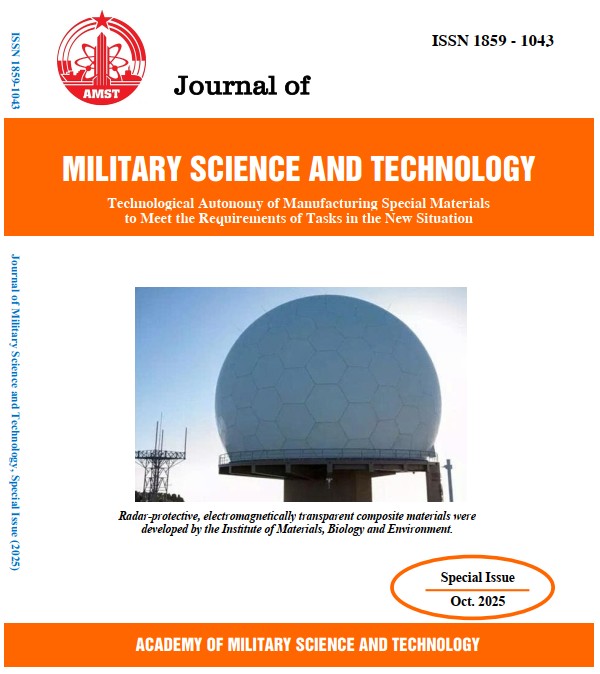Material composition study and computational evaluation toward the fabrication of tubular positive electrodes for high-capacity lead-acid batteries
DOI:
https://doi.org/10.54939/1859-1043.j.mst.IMBE.2025.200-206Keywords:
Tube electrode; PAM; Lead-acid battery.Abstract
This study investigates the material composition and structural characteristics of tubular positive electrodes in high-capacity lead–acid batteries, combining experimental analysis with theoretical design calculations. Advanced characterization techniques, including X-ray diffraction (XRD), scanning electron microscopy coupled with energy-dispersive X-ray spectroscopy (SEM–EDS), and infrared (IR) spectroscopy, were employed to identify phase composition, elemental constituents, and organic additives. Results indicate that the positive active mass primarily consists of tetragonal PbO₂ with minor orthorhombic PbSO₄, along with carbonaceous and polymeric conductive additives. The tubular sheath was found to be a polyester-based composite containing ester, alcohol, and anhydride functional groups, with silica-derived Si–O–Si structures. SEM analysis revealed a highly porous fine-particle morphology, suitable for binder-free filling into tubular casings. Computational design determined key structural and mass parameters of the positive active material (PAM), leading to an optimized electrode configuration with a theoretical battery capacity of 17,189 Ah. These findings provide a scientific basis for the domestic production of high-performance tubular lead–acid batteries.
References
[1]. Li, M., Zhao, Y., & Chen, D., “Advanced Characterization of Tubular Lead–Acid Battery Electrodes for Material Reconstruction and Performance Benchmarking”, Journal of Energy Storage, Vol. 76, 109325, (2024).
[2]. Nguyen, H. T. et al., “Computational Modeling for Optimization of Lead–Acid Battery Electrodes: Toward Domestic Manufacturing Strategies”, Electrochimica Acta, Vol. 445, 141030, (2023).
[3]. Nazghelichi, T., Torabi, F., & Esfahanian, V., “Non-dimensional analysis of electrochemical governing equations of lead–acid batteries”, (2017).
[4]. Sunu, W. G., “Mathematical Model for Design of Battery Electrodes: Lead-Acid Cell Modelling”, in Electrochemical Cell Design, (1984).
[5]. Sulzer, V., Chapman, S. J., Please, C. P., Howey, D. A., & Monroe, C. W., “Faster Lead-Acid Battery Simulations from Porous-Electrode Theory: II. Asymptotic Analysis”, (2019).
[6]. Habashi, F., “Alloys: Preparation, Properties, Applications”, 1st Ed, Wiley-VCH, New York, (1998).
[7]. Clark, M. S., “Lead-antimony, lead-calcium, lead-selenium, VRLA, Ni-Cd”, paper presented at the International Stationary Battery Conference, Gaylord Palms Resort and Convention Centre, Orlando, Florida, USA, 26–29, (2009).
[8]. Liu, J., Li, X., Barbero, E., & Dong, C., “Effect of Sn concentration on the corrosion resistance of Pb–Sn alloys in H₂SO₄ solution”, Journal of Power Sources, Vol. 155, No. 2, pp. 420–427, (2006).
[9]. Guruswamy, S., “Engineering Properties and Applications of Lead Alloys”, 1st Ed, Marcel Dekker, (2000).
[10]. Prout, L., “Aspects of lead/acid battery technology 2. Tubular positive plates”, Journal of Power Sources, Vol. 41, pp. 163–183, (1993).







